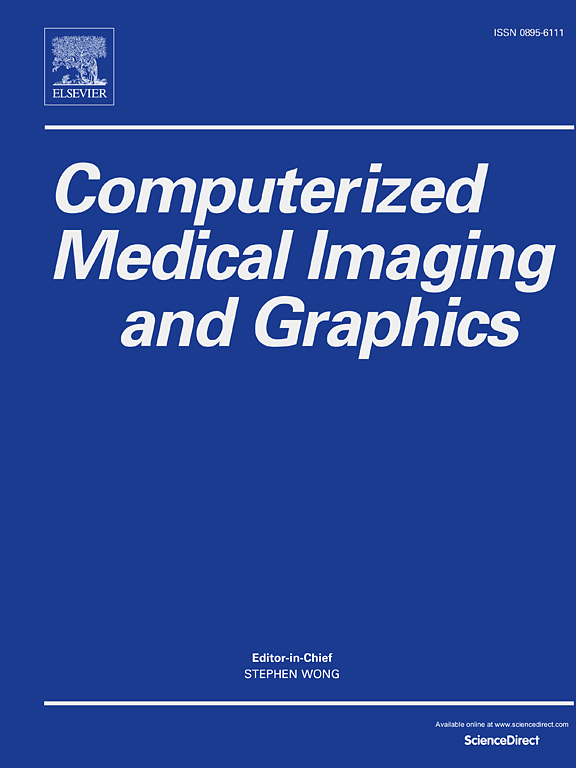Multimodal Cross Global Learnable Attention Network for MR images denoising with arbitrary modal missing
IF 5.4
2区 医学
Q1 ENGINEERING, BIOMEDICAL
Computerized Medical Imaging and Graphics
Pub Date : 2025-01-30
DOI:10.1016/j.compmedimag.2025.102497
引用次数: 0
Abstract
Magnetic Resonance Imaging (MRI) generates medical images of multiple sequences, i.e., multimodal, from different contrasts. However, noise will reduce the quality of MR images, and then affect the doctor’s diagnosis of diseases. Existing filtering methods, transform-domain methods, statistical methods and Convolutional Neural Network (CNN) methods main aim to denoise individual sequences of images without considering the relationships between multiple different sequences. They cannot balance the extraction of high-dimensional and low-dimensional features in MR images, and hard to maintain a good balance between preserving image texture details and denoising strength. To overcome these challenges, this work proposes a controllable Multimodal Cross-Global Learnable Attention Network (MMCGLANet) for MR image denoising with Arbitrary Modal Missing. Specifically, Encoder is employed to extract the shallow features of the image which share weight module, and Convolutional Long Short-Term Memory(ConvLSTM) is employed to extract the associated features between different frames within the same modal. Cross Global Learnable Attention Network(CGLANet) is employed to extract and fuse image features between multimodal and within the same modality. In addition, sequence code is employed to label missing modalities, which allows for Arbitrary Modal Missing during model training, validation, and testing. Experimental results demonstrate that our method has achieved good denoising results on different public and real MR image dataset.
求助全文
约1分钟内获得全文
求助全文
来源期刊
CiteScore
10.70
自引率
3.50%
发文量
71
审稿时长
26 days
期刊介绍:
The purpose of the journal Computerized Medical Imaging and Graphics is to act as a source for the exchange of research results concerning algorithmic advances, development, and application of digital imaging in disease detection, diagnosis, intervention, prevention, precision medicine, and population health. Included in the journal will be articles on novel computerized imaging or visualization techniques, including artificial intelligence and machine learning, augmented reality for surgical planning and guidance, big biomedical data visualization, computer-aided diagnosis, computerized-robotic surgery, image-guided therapy, imaging scanning and reconstruction, mobile and tele-imaging, radiomics, and imaging integration and modeling with other information relevant to digital health. The types of biomedical imaging include: magnetic resonance, computed tomography, ultrasound, nuclear medicine, X-ray, microwave, optical and multi-photon microscopy, video and sensory imaging, and the convergence of biomedical images with other non-imaging datasets.

 求助内容:
求助内容: 应助结果提醒方式:
应助结果提醒方式:


